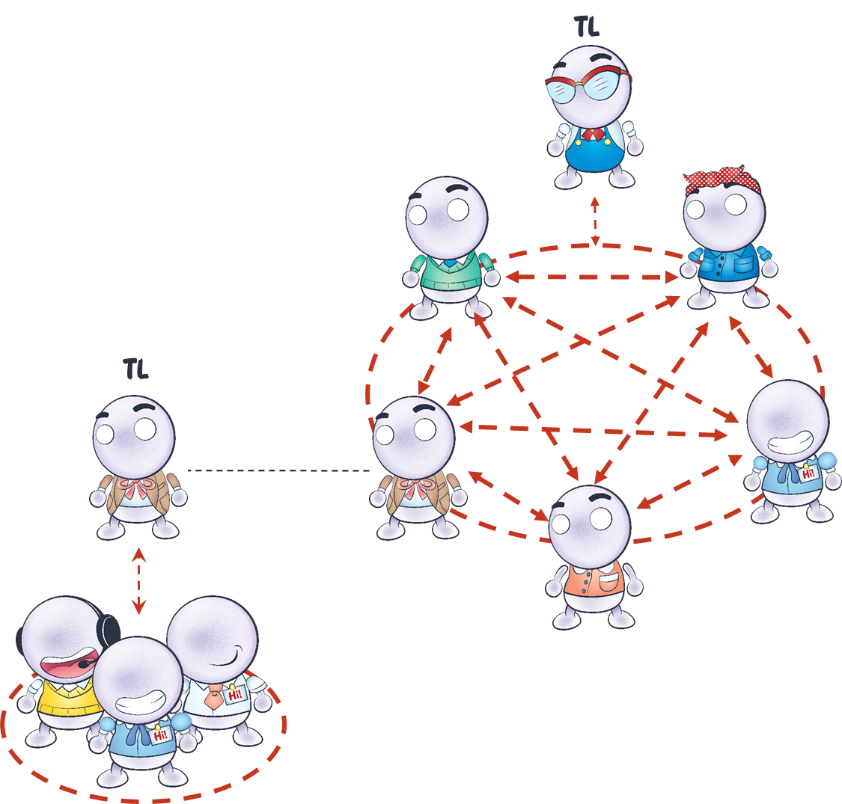Matrix Management Wiki
Home » The Structure Key » 3I. Interlocking Teams
- 3I1. The purpose of interlocking teams is to eliminate the gap between two interdependent teams.
- 3I2. Teams are interlocked when they share team membership and/or have overlapping accountability.
- 3I2i. The team the sponsor is on is interlocked with his team leader’s team when the sponsor has individual accountability for the success of the team leader and when the team leader has an overlap of individual accountability with the sponsor.
- 3I3. Overlapping team membership creates interlocked teams:
- 3I3i. When a team member or team leader of one team also sits on another team as a team member or team leader.
- 3I3ia. The team member or team leader is the interlocking element that connects the two teams.
- 3I3ib. Figure 3.5. Diagram of interlocked teams.

- 3I3ic. The team member or team leader ensures the two teams are aligned.
- 3I3id. The team member on the main team has individual accountability for a goal or deliverable that the subteam will produce.
- 3I4. Horizontal teams can be interlocked through shared team membership.
- 3I4i. A team is interlocked when a team member on one team is also a team member on a stakeholder team.
- 3I4ia. Example: A team member on a supplier team is also a team member on a commodity team. That team member ensures the alignment of both teams.
- 3I4ib. Alignment is only possible if there is prioritization across both segments. (See Section 4C for more on prioritization.)
- 3I4ii. Team member liaisons create a loose form of interlocking.
- 3I4iia. A liaison is a person assigned to ensure that a stakeholder is engaged in the team’s work.

